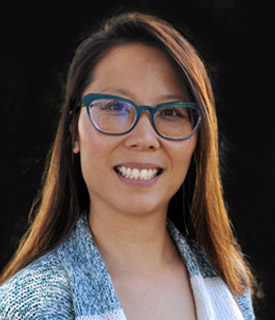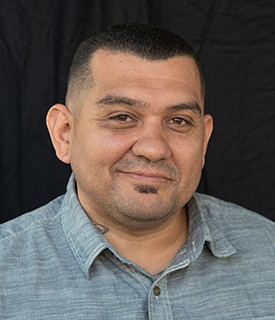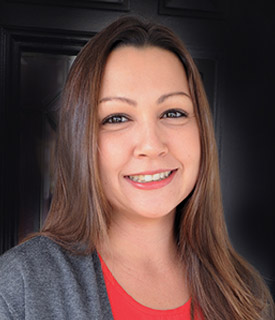Substance abuse often involves trauma and pain, creating what we know as co-occurring disorders. Co-occurring disorders often include the development of more than one mental health disorder, such as anxiety or depression, or the manifestation of a mental health condition alongside substance use disorder (SUD).
While co-occurring disorders may present differently and entail specific diagnostic criteria, they are ultimately interconnected because both conditions originate from a more profound encounter or conflict. Whether a past traumatic experience or an emotional imbalance, the symptoms and behaviors develop into inner turmoil and struggle.
Traditional talk therapies and behavioral interventions effectively reduce and manage the symptoms and behaviors; however, they may not be enough to settle the inner conflicts and disconnect between mind, body, and emotion.
The Power of Creativity
Twenty years in the making, a scientific study set out to discover how powerful and influential art therapy can be when treating mental health disorders. After much research and review, it was revealed that art therapy could help provide clients with tools to identify and solve problems that develop from the stresses of life.
Art therapy is a comprehensive treatment that uses psychotherapy and artistic creation processing, such as drama, music, dance, and drawing, to support mental health and well-being.
Art Therapy and Addiction
Art therapists use psychotherapy techniques in therapy sessions, permitting clients to discover themselves and understand areas of growth. Feelings of denial, depression, compulsion, and obsession are minimized, allowing individuals to feel connected and restored without believing that substances are the only means of peace or pleasure.
Benefits of Art Therapy for Co-Occurring Disorders
When does art transform into therapy? Art therapy is considered non-verbal therapy; therefore, the fundamental factor of this technique is the mixture of expressive arts and verbal processing. The nonverbal and verbal combination helps reveal the inner dissonance or conflict and connect how this is outwardly exhibited in symptoms or behaviors.
When applied correctly, art therapy is very beneficial for the client. Some benefits of art therapy include:
- Improves relationships with family members and friends
- Reduces isolation
- Decreases anxiety, depression, and stress
- Increases understanding of self
- Forward-thinking about the future
- Provides positive perspective
- Distractions from pain, illness, escapism
- Gives a sense of personal achievement
- Provides pleasure, satisfaction, accomplishment, and a sense of pride
- Provides a healing experience, comfort, relaxation, support, and encouragement
- A safe place to express emotions
- Control over emotions and real-life situations
- Increases self-esteem
Art therapy allows clients to direct their work and express their feelings in a meaningful and beneficial way.
When Should Art Therapy Be Used?
Art therapy can help clients overcome many psychological issues and can be used effectively for various psychiatric treatments, such as group therapy or psychotherapy. Art therapy complements traditional talk therapy by offering an interruption from therapy’s direct, intensive work and letting the subconscious express itself artistically.
Aside from co-occurring disorders, art therapy can also be used for the treatment of:
- Obsessive-compulsive disorder (OCD)
- Stress
- Schizophrenia
- Eating disorders
- Family problems or relationship issues
- Negative psychological effects
- Post-traumatic stress disorder (PTSD)
- Anxiety
- Depression
- Substance use disorder (SUD)
The wide range of mental health disorders that art therapy can treat and its nonverbal role in the therapeutic process are significant reasons why it is beneficial in treating co-occurring disorders.
Expressing thoughts or insights is not always the most effective way to communicate unearthed emotions during recovery. Art therapy gives clients an unconventional way to portray and share their feelings. Once these feelings are set free, art offers a visible, physical object that can be examined with the therapist and possibly peers in a group session.
Seeking Art Therapy Treatment Services
Individuals with co-occurring disorders have the option to seek treatment centers that provide innovative practices like art therapy. The first step is to find a trained professional who qualifies as an art therapist. The Art Therapy Credentials Board website offers answers to many questions about finding an art therapist near you.
Finding a treatment center that provides specialty care can be done at the Substance Abuse and Mental Health Services Administration (SAMHSA) website, which offers the behavioral health treatment services locator to help find mental health services in your area.
Once you find a credentialed art therapist and treatment center, you need to know what to expect during the therapy sessions. Clients must be prepared to answer questions about the art they create.
A few examples of questions an art therapist could ask their client include:
- “What were you thinking while painting?”
- “Did your mood alter from the beginning to the end of the process?”
- “Why did you choose what you created?”
When words fail us, creative arts can prove to be beneficial. The additional support of an art therapist and other methods such as detox medication, individual therapy, group therapy, and medical supervision can significantly improve the experience on the road to recovery. If you or a loved one struggles with mental health or substance use disorder, Crownview Co-Occurring Institute in San Diego, CA, wants to help. We offer dual diagnosis treatment for addiction and mental health disorders that can be life-changing. Through an integrated care approach, Crownview Co-Occurring Institute can treat both conditions simultaneously. We offer tailored treatment plans to meet physical and emotional needs for recovery. Throughout treatment, you will be monitored to ensure you are receiving effective integrated care. Let Crownview Co-Occurring Institute heal your mind, body, and spirit through evidence-based treatment programs for successful long-term recovery.
Ready to Take the Next Step?
Contact our admissions team to learn how Crownview can help you or your loved one.

 Kimberly Gilkey, RADT-1
Kimberly Gilkey, RADT-1 Timothy Wieland
Timothy Wieland David Abram
David Abram Mark Melden, DO/DABPN
Mark Melden, DO/DABPN Jeffrey Klein
Jeffrey Klein Nathan Kuemmerle, MD
Nathan Kuemmerle, MD Laura Hopper, Ph.D.
Laura Hopper, Ph.D. Rebecca McKnight, PsyD
Rebecca McKnight, PsyD Milena Dun, PhD
Milena Dun, PhD Brieana Turner, MA, LMFT
Brieana Turner, MA, LMFT Brittany Perkins, MA, LMFT
Brittany Perkins, MA, LMFT Joanne Talbot-Miller, M.A., LMFT
Joanne Talbot-Miller, M.A., LMFT Alexis Weintraub, PsyD
Alexis Weintraub, PsyD Kathleen McCarrick, MSW, LSW
Kathleen McCarrick, MSW, LSW Christina Lam, N.P.
Christina Lam, N.P. John P. Flores, SUDCC-IV-CS, CADC II
John P. Flores, SUDCC-IV-CS, CADC II David Dalton, Facility Operations Director
David Dalton, Facility Operations Director Amy Thompson
Amy Thompson Kelly Schwarzer
Kelly Schwarzer Jovanna Wiggins
Jovanna Wiggins Alexandria Avalos, MSW, ACSW
Alexandria Avalos, MSW, ACSW Michelle Ertel
Michelle Ertel Emily Skillings
Emily Skillings Amanda Irrgang, Registered Dietitian Nutritionist (RDN)
Amanda Irrgang, Registered Dietitian Nutritionist (RDN) Gianna Melendez
Gianna Melendez Jodie Dahl, CpHT
Jodie Dahl, CpHT Jordan Granata, PsyD
Jordan Granata, PsyD